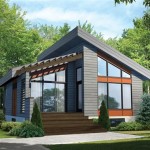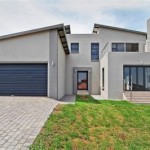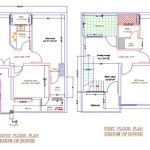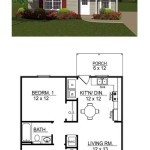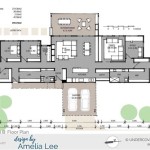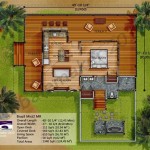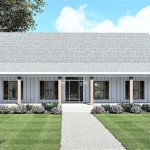Good Small House Plans: Maximizing Space and Minimizing Footprint
The rising cost of living and a growing interest in sustainable lifestyles have contributed to the increasing popularity of small house plans. Building smaller offers numerous advantages, from reduced construction costs and lower utility bills to a smaller environmental footprint. Finding the right plan, however, requires careful consideration of individual needs and lifestyle preferences.
Key Considerations When Choosing a Small House Plan
Several factors influence the effectiveness of a small house plan. Considering these elements early in the planning process will ensure a functional and comfortable living space.
*Lifestyle Needs: Carefully assess how space will be utilized. Consider the number of occupants, hobbies, work-from-home requirements, and whether frequent guests are anticipated. This assessment will inform decisions regarding the number of bedrooms, bathrooms, and the overall layout.
*Lot Size and Orientation: The chosen plan should complement the available lot. Consider the lot's dimensions, shape, and topography. The house's orientation should maximize natural light and ventilation while minimizing energy consumption.
*Budget Constraints: Establishing a realistic budget from the outset helps narrow down plan options. Factor in not only the cost of the plan itself but also materials, labor, and potential unforeseen expenses.
*Local Building Codes: Ensure the chosen plan adheres to local building codes and zoning regulations. These regulations often dictate allowable building size, setbacks, and other critical aspects of construction.
*Accessibility Requirements: If accessibility is a concern, select a plan that incorporates features like wider doorways, ramps, and adaptable bathroom layouts. Planning for future accessibility needs can save significant costs and renovations later.
Popular Small House Plan Styles
A variety of architectural styles lend themselves well to small house designs. Each style offers distinct aesthetic qualities and functional advantages.
*Tiny Houses: Characterized by extreme minimalism, tiny houses typically range from 100 to 400 square feet. They often prioritize mobility and off-grid living, requiring innovative space-saving solutions.
*Cottages: Cottage-style homes evoke a sense of charm and coziness. They typically feature compact layouts, gabled roofs, and front porches. Cottages are well-suited for both rural and suburban settings.
*Bungalows: Bungalows are known for their single-story layouts and low-pitched roofs. They offer a simple, functional design that maximizes usable living space. Bungalows often include built-in storage and open floor plans.
*Cabins: Cabins offer a rustic aesthetic, often incorporating natural materials like wood and stone. They can range from simple one-room structures to more elaborate multi-story designs.
Maximizing Space in Small House Plans
Efficient use of space is paramount in small house design. Several strategies can create a sense of spaciousness and functionality.
*Open Floor Plans: Eliminating unnecessary walls creates a more open and airy feel. Open floor plans allow for flexible furniture arrangements and improved flow between living spaces.
*Multi-Functional Spaces: Designate areas that can serve multiple purposes. For example, a dining area could double as a workspace, or a guest bedroom could also function as a home office.
*Built-in Storage: Maximize vertical space with built-in shelving, cabinets, and drawers. This reduces the need for bulky furniture and keeps clutter to a minimum.
*Natural Light: Large windows and skylights can make a small space feel significantly larger. Natural light also reduces the need for artificial lighting, saving energy and enhancing the overall ambiance.
*Light Color Palettes: Light colors reflect light, creating an illusion of spaciousness. Opt for light wall colors, flooring, and furniture to brighten up the space.
*Minimalist Decor: Embrace a minimalist approach to decorating. Avoid cluttering the space with excessive furniture and accessories. Choose a few key pieces that enhance the functionality and aesthetic of the room.
Finding Good Small House Plans
Numerous resources are available to help individuals find the perfect small house plan.
*Online Plan Databases: Websites specializing in house plans offer a vast selection of designs categorized by size, style, and features. These databases allow users to filter their search based on specific criteria.
*Architects and Designers: Working with a professional architect or designer allows for customization and personalized design solutions. They can create a plan tailored to specific needs and preferences.
*Pre-Fabricated Homes: Prefabricated or modular homes offer a streamlined construction process and often come with pre-designed floor plans optimized for small spaces.
Choosing the right small house plan involves careful consideration of individual needs, budget, and lifestyle. By prioritizing functionality, efficient space utilization, and thoughtful design, a small house can offer a comfortable and sustainable living environment.

These Small House Plans Pack A Lot Of Punch Houseplans Blog Com

Affordable Modern Style House Plan 7558 Solo

10 Small House Plans With Open Floor Blog Homeplans Com

Modern Style On A Budget 10 Tiny Cool House Plans Houseplans Blog Com

10 Small House Plans With Open Floor Blog Homeplans Com

10 More Small Simple And House Plans Blog Eplans Com

Entertainment The Perfect Small House Plan With Large Covered Porch Mm 640 E

Small House Plan Examples

Best Floor Plan For A Small House Plans One Story

Small House Plans Simple Floor Cool

